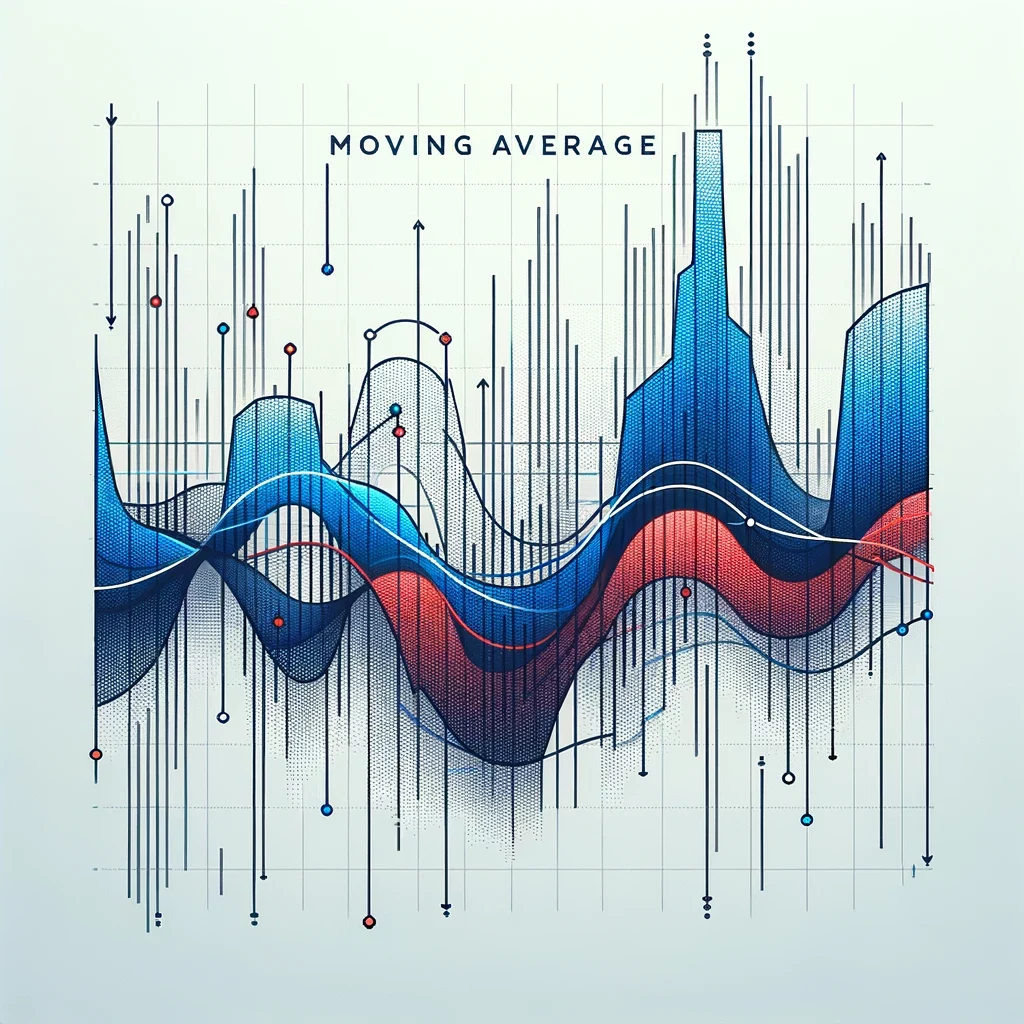The most accurate MT4 indicators
MT4 indicators and their importance in forex trading
The most accurate MetaTrader 4 (MT4) indicators are tools used by traders in the foreign exchange (forex) market to analyze price movements, identify trends, and make informed trading decisions. These indicators are essential for traders because they provide visual representations of various aspects of market data, helping them to better understand market dynamics and predict future price movements.
Here’s an overview of some common MT4 indicators and their importance in forex trading:
Moving Averages (MA)

Moving averages smooth out price data to create a single flowing line, which makes it easier to identify trends. Traders often use MA crossovers (e.g., when a short-term MA crosses above or below a long-term MA) to signal potential buy or sell opportunities.
Relative Strength Index (RSI)

RSI measures the speed and change of price movements. It oscillates between 0 and 100 and is used to identify overbought or oversold conditions in the market, indicating potential reversal points.
Bollinger Bands

Bollinger Bands consist of a middle band (usually a simple moving average) and two outer bands that are standard deviations away from the middle band. They help traders identify volatility and potential price reversals when the price moves beyond the bands.
MACD (Moving Average Convergence Divergence)

MACD is a trend-following momentum indicator that shows the relationship between two moving averages of a security’s price. Traders use it to identify changes in momentum and potential trend reversals.
Stochastic Oscillator

The Stochastic Oscillator is also one of most accurate MT4 indicators it compares a security’s closing price to its price range over a certain period. It helps traders identify overbought or oversold conditions and potential trend reversals.
Ichimoku Kinko Hyo
Ichimoku is a comprehensive indicator is one the most accurate MT4 indicators that provides information about support and resistance levels, trend direction, and momentum. It consists of several components, including the Kumo (cloud), Tenkan-sen, Kijun-sen, and Chikou span.
Fibonacci Retracement

Fibonacci retracement levels are horizontal lines that indicate potential support and resistance levels based on Fibonacci ratios. Traders use them to identify potential reversal points during a trend.
Volume Indicators
Volume indicators, such as the Volume Oscillator or On-Balance Volume (OBV), provide insights into market participation and strength. They help traders confirm the validity of price movements by analyzing trading volume.
These are just a few examples of the many most accurate MT4 indicators. Each indicator serves a specific purpose in analyzing price movements and market conditions, and traders often use a combination of indicators to form their trading strategies. However, it’s important for traders to remember that indicators should be used as tools to support decision-making and not as standalone signals. Additionally, traders should consider factors such as market context, fundamental analysis, and risk management alongside technical indicators when making trading decisions.
How to use MT4 indicators to confirm signals
When it comes to most accurate MT4 indicators , you can use multiple indicators to confirm for several reasons:
- Reducing False Signals: No single indicator is foolproof, and each has its strengths and weaknesses. By using multiple indicators, traders can filter out false signals that may arise from individual indicators. When multiple indicators align to signal a trade, it adds more weight to the decision, increasing the likelihood of a successful outcome.
Confirmation of Trends: Different indicators may provide confirmation of the same underlying trend. For example, a moving average crossover may signal a trend reversal, while the RSI indicating overbought or oversold conditions adds further confirmation to the potential reversal. Confirming signals across different types of indicators enhances confidence in the identified trend direction.
Validation of Support and Resistance Levels: Support and resistance levels are critical in forex trading. Multiple indicators, such as Fibonacci retracements, trendlines, and volume analysis, can help validate these levels. When several indicators converge at a specific price level, it strengthens the significance of that level as support or resistance, increasing the trader’s confidence in their trading decision.
Divergence Confirmation: Divergence occurs when the price of a currency pair moves in the opposite direction of an indicator. This phenomenon can signal potential trend reversals. By using multiple indicators, traders can confirm divergence signals across different aspects of market data, increasing the reliability of the signal.
Risk Management: Using multiple indicators can also aid in risk management. If one indicator suggests a buy signal while another indicates a sell signal, it may indicate a period of market uncertainty or consolidation. In such cases, traders may choose to reduce position sizes or refrain from trading until clearer signals emerge, thereby minimizing potential losses.
Comprehensive Market Analysis: Forex markets are influenced by various factors, including economic data releases, geopolitical events, and market sentiment. Using multiple indicators allows traders to conduct a more comprehensive analysis of market conditions, incorporating both technical and fundamental factors into their trading decisions.
Customization and Adaptability: Different trading strategies may require different combinations of indicators based on the trader’s preferences, risk tolerance, and market conditions. By using multiple indicators, traders can customize their trading approach and adapt to changing market dynamics effectively.
In summary, using multiple indicators to confirm signals enhances the robustness and reliability of trading decisions in forex markets. It helps traders filter out noise, validate trends and key levels, manage risks effectively, and conduct comprehensive market analysis. However, it’s essential to strike a balance and avoid overcomplicating the trading strategy with too many indicators, as this can lead to analysis paralysis and confusion.
Risks of most accurate MT4 indicators
most accurate MT4 indicators are tools used by traders to analyze price movements, identify trends, and make trading decisions within the MT4 trading platform. Like any trading tool, they come with certain risks and considerations:
Accuracy: Not all indicators are equally reliable. Some may provide false signals or lag behind the actual market movements, leading to losses if traders rely solely on their signals without proper confirmation.
Over-reliance: Relying too heavily on indicators without considering other aspects of trading such as market fundamentals, sentiment analysis, or risk management can lead to poor decision-making and losses.
Market conditions: Indicators may perform differently under various market conditions. What works well in a trending market may not work in a ranging market, and vice versa. Traders need to understand the strengths and limitations of each indicator and adapt their strategies accordingly.
False signals: Indicators may generate false signals, especially during periods of low liquidity, high volatility, or when market conditions are choppy. Traders should be cautious and use additional filters or confirmation techniques to reduce the likelihood of acting on false signals.
Lagging indicators: Many indicators are based on historical price data and thus lag behind the current market price. This lag can result in delayed signals, causing traders to enter or exit positions too late and miss out on potential profits or incur losses.
Over-optimization: Traders may fall into the trap of over-optimizing their trading strategies by tweaking indicator parameters to fit past market data perfectly. This can lead to curve-fitting and the creation of strategies that perform well only in specific historical periods but fail to generalize to future market conditions.
Complexity: Some indicators can be complex and difficult to understand, especially for novice traders. Using indicators without a clear understanding of how they work can lead to confusion and misinterpretation of signals.
Psychological impact: Indicators can influence traders’ emotions and behavior, leading to impulsive or irrational decision-making. Traders should be aware of the psychological impact of using indicators and strive to maintain emotional discipline in their trading.
To mitigate these risks, traders should thoroughly test indicators on historical data, use them in conjunction with other technical and fundamental analysis tools, implement proper risk management techniques, and continuously monitor and adjust their trading strategies based on evolving market conditions. Additionally, gaining experience and developing a deep understanding of how indicators work can help traders use them more effectively and minimize potential risks.








